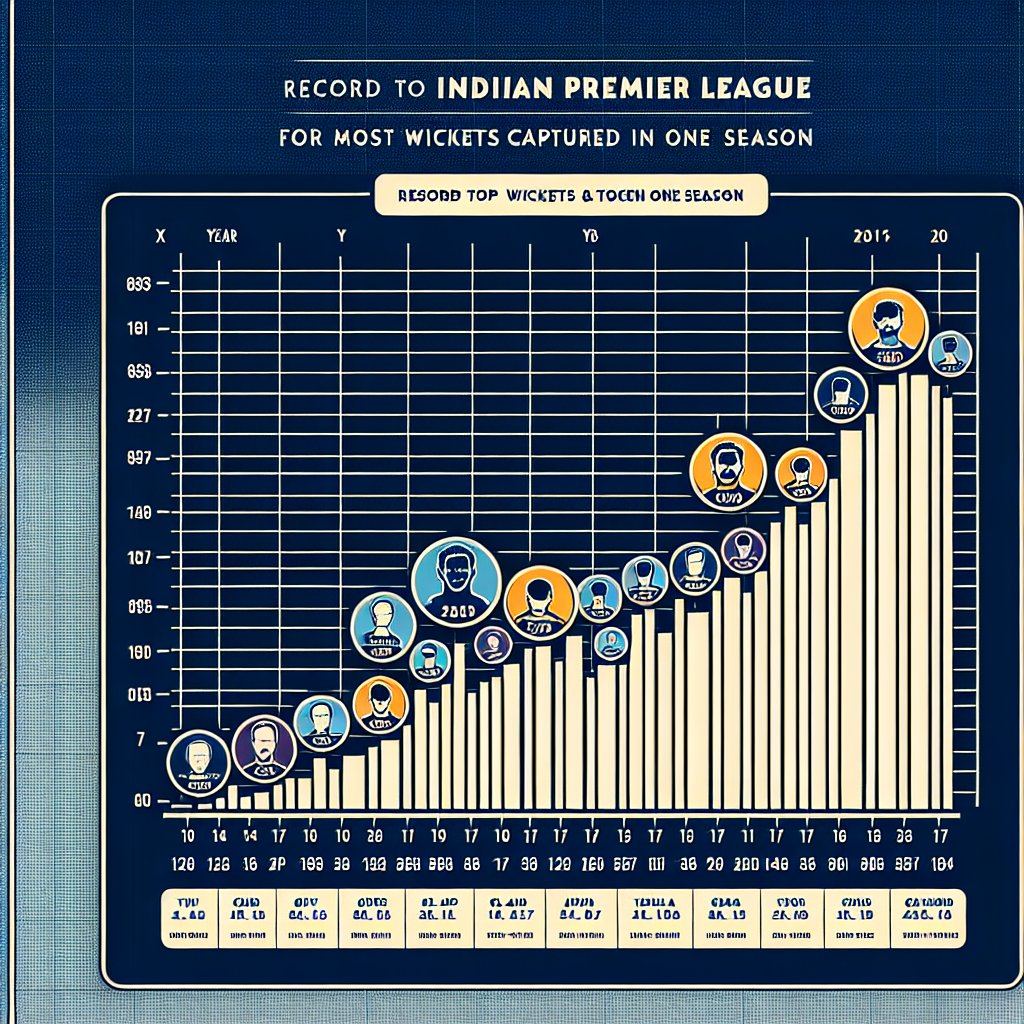Most Wickets in IPL in One Season: A Record-Breaking Feat

The Indian Premier League (IPL) has been a platform where cricketing legends are born, and records are shattered. Among the many records that captivate fans and players alike, the record for the most wickets taken in a single IPL season stands out as a testament to a bowler’s skill, endurance, and strategic acumen. This article delves into the intricacies of this record, exploring the players who have achieved this feat, the strategies they employed, and the impact of their performances on their teams and the league as a whole.
The Significance of Wickets in T20 Cricket
In the fast-paced world of T20 cricket, every ball counts, and taking wickets is crucial for a team’s success. Wickets not only halt the opposition’s scoring momentum but also apply psychological pressure, often leading to further breakthroughs. A bowler who can consistently take wickets is invaluable, making the record for the most wickets in a single IPL season a significant achievement.
Historical Overview of the Record
Since the inception of the IPL in 2008, several bowlers have left their mark on the tournament. However, only a few have managed to dominate a season with their wicket-taking prowess. Let’s take a closer look at some of the standout performances over the years.
James Faulkner (2013)
In the 2013 IPL season, Australian all-rounder James Faulkner emerged as a formidable force with the ball. Playing for the Rajasthan Royals, Faulkner took 28 wickets in 16 matches, showcasing his ability to bowl in crucial phases of the game. His performance was instrumental in Rajasthan’s journey to the playoffs.
Dwayne Bravo (2013)
The same year, West Indian all-rounder Dwayne Bravo set a new benchmark by taking 32 wickets for the Chennai Super Kings. Bravo’s ability to bowl at the death and his variations in pace made him a nightmare for batsmen. His record-breaking performance earned him the Purple Cap, awarded to the highest wicket-taker of the season.
Kagiso Rabada (2020)
In the 2020 season, South African speedster Kagiso Rabada took 30 wickets for the Delhi Capitals. Rabada’s express pace and ability to extract bounce from any surface made him a key player for his team. His efforts helped Delhi reach the finals, highlighting the impact a leading wicket-taker can have on a team’s fortunes.
Strategies for Success: How Bowlers Achieve High Wicket Counts
Taking a high number of wickets in a single IPL season requires more than just raw talent. It involves a combination of strategic planning, adaptability, and mental toughness. Here are some strategies employed by successful bowlers:
- Variation in Pace: Bowlers like Dwayne Bravo and Jasprit Bumrah have mastered the art of varying their pace, making it difficult for batsmen to predict deliveries.
- Yorkers and Bouncers: Delivering accurate yorkers and well-directed bouncers can be effective in restricting runs and taking wickets, especially in the death overs.
- Reading the Batsman: Understanding a batsman’s strengths and weaknesses allows bowlers to set traps and exploit vulnerabilities.
- Field Placements: Strategic field placements complement a bowler’s plan, increasing the chances of taking wickets.
Case Study: Dwayne Bravo’s Record-Breaking 2013 Season
Dwayne Bravo’s 2013 season with the Chennai Super Kings is a prime example of how a bowler can dominate an IPL season. Bravo’s success was not just due to his skill but also his ability to adapt to different match situations. His slower balls and deceptive variations were particularly effective in the death overs, where he often bowled with precision and control.
Bravo’s performance was also a result of his understanding of the game and his ability to remain calm under pressure. His experience in international cricket and various T20 leagues around the world contributed to his success, making him a valuable asset for the Chennai Super Kings.
The Impact of Leading Wicket-Takers on Their Teams
A bowler who consistently takes wickets can significantly influence a team’s performance in the IPL. Here are some ways in which leading wicket-takers impact their teams:
- Building Pressure: Regular wickets create pressure on the opposition, often leading to more wickets as batsmen take risks to score runs.
- Boosting Team Morale: A bowler in form can lift the entire team’s spirits, creating a positive atmosphere in the dressing room.
- Strategic Advantage: Captains can rely on their leading bowlers to deliver in crucial moments, allowing for more flexible game plans.
Challenges Faced by Bowlers in the IPL
While taking wickets is crucial, bowlers face several challenges in the IPL, including:
- Flat Pitches: Many IPL venues have flat pitches that favor batsmen, making it difficult for bowlers to extract movement or bounce.
- Short Boundaries: Smaller boundaries in some stadiums mean that even mistimed shots can result in sixes, adding pressure on bowlers.
- High-Quality Batsmen: The IPL attracts some of the best batsmen in the world, requiring bowlers to be at their best every game.
Future Prospects: Who Could Break the Record?
As the IPL continues to evolve, new talents emerge each season, eager to make their mark. Some bowlers who could potentially break the record for most wickets in a single season include:
- Jasprit Bumrah: Known for his deadly yorkers and ability to bowl in the death overs, Bumrah is always a threat to opposition batsmen.
- Rashid Khan: The Afghan leg-spinner has been a consistent performer in the IPL, with his variations and control making him a potent wicket-taker.
- Jofra Archer: With his express pace and ability to bowl in all phases of the game, Archer has the potential to dominate an IPL season.
Conclusion: The Legacy of Record-Breaking Bowlers
The record for the most wickets in an IPL season is more than just a statistic; it is a reflection of a bowler’s dominance and impact on the game. Bowlers like Dwayne Bravo, Kagiso Rabada,